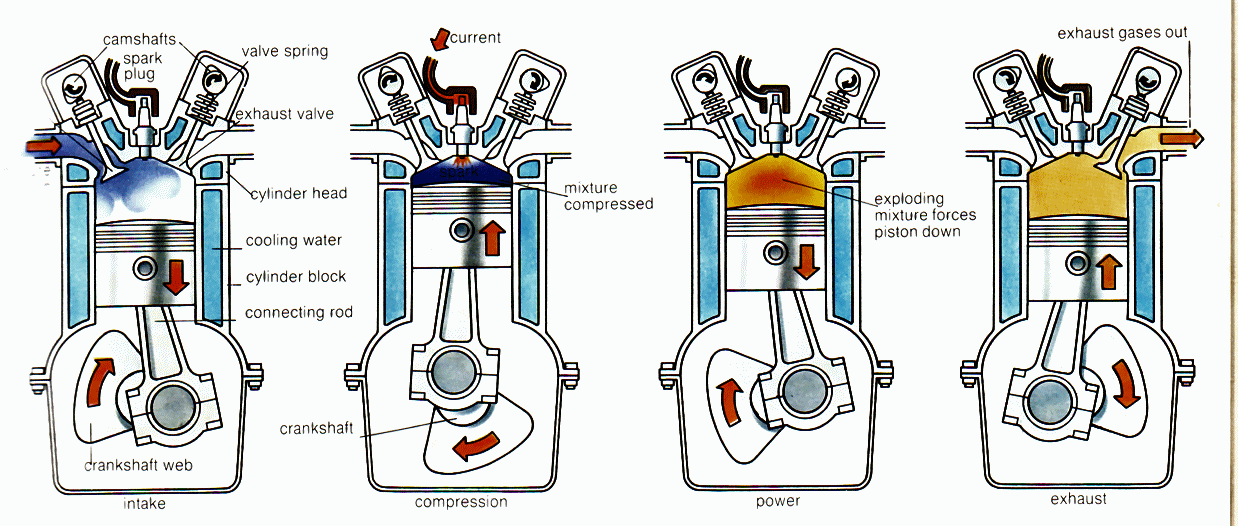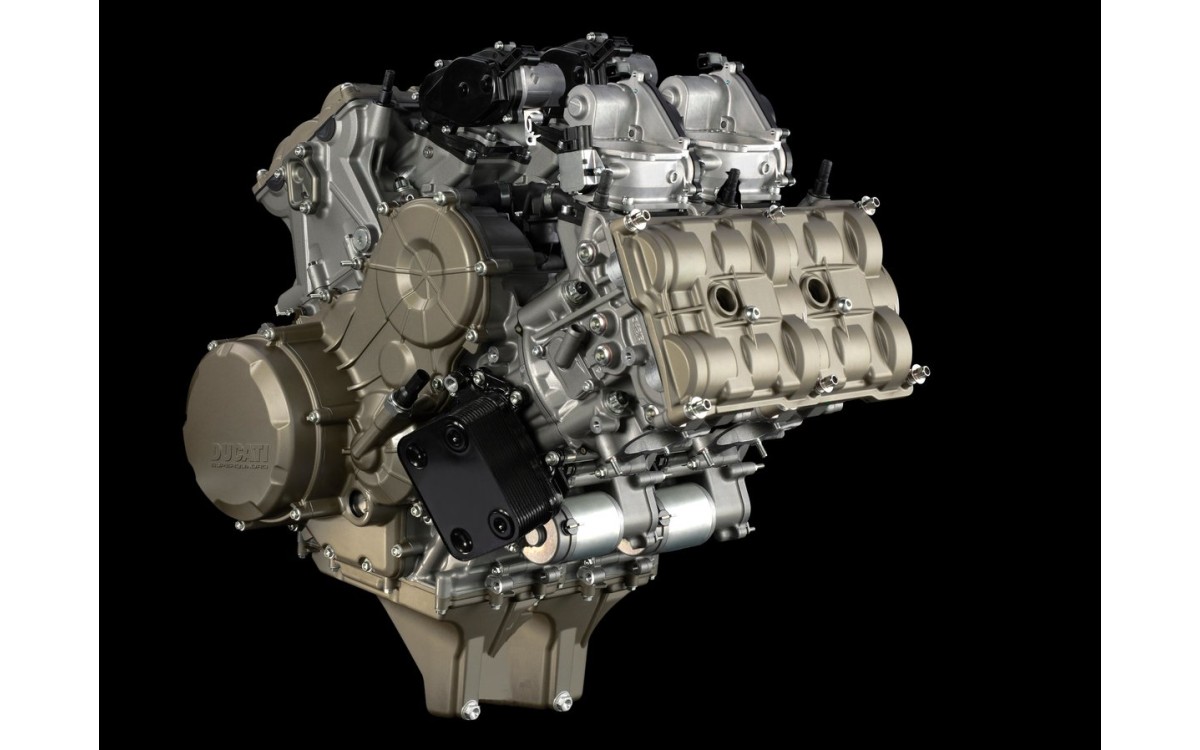There are two common types of power cycles for petrol engines: Four-stroke and two-stroke.
An internal combustion engine needs to combust fuel and air to produce the power (mechanical energy) that drives the bike.To produce this power, the engine needs to perform four functions i.e. intake, compression, combustion and exhaust. In a four-stroke engine, those four functions take four distinct strokes (up and down movements of the piston) to produce power.

1. INTAKE
Also called suction, this stroke begins with the piston at top dead centre (TDC).As it travels downwards toward bottom dead centre (BDC), negative pressure is produced in the cylinder. The intake valve opens and the fuel/air mixture is sucked in to fill the cylinder.
2. COMPRESSION
As the piston travels back up from BDC to TDC, the intake valve closes and traps the fuel/air mixture inside the cylinder. The piston compresses the mixture in preparation for combustion.
The crankshaft travelsone full, 360o revolution (1 RPM) when the piston reaches TDC.
Also note that the volume at BDC divided by the volume at TDC gives us the engine’s compression ratio.
3. COMBUSTION
Also known as ignition or power stroke. The sparkplug (or sparkplugs) fire, igniting the compressed fuel/air mixture. The combustion chamber’s pressure raises by 460 psi to 725 psi(3,200 to 5,000 kPa), and the temperature to 600o Celcius.
The compression pressure forces the piston back downwards to BDC, creating the mechanical work (kinetic energy) to turn the crankshaft.
4. EXHAUST
Also known as outlet stroke. The exhaust opens as the upward movement of the piston pushes the burned gasses out past the exhaust valve, into the exhaust port and exhaust pipe.
The crankshaft completes two full revolutions (720o) when the piston fully reaches TDC. Hence, a four-stroke engine uses two RPM to produce mechanical power. It means there are 5,000 power strokes if you hold onto 10,000 RPM for one minute. Yes, that’s how hard the engine is actually working.

